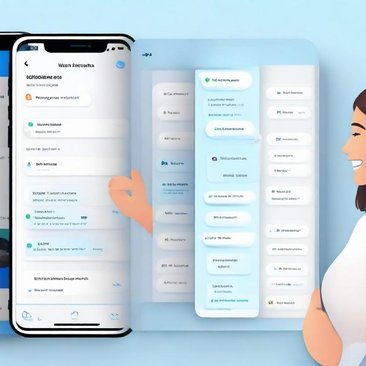Technology Goals
Apache Kafka is a distributed, high-throughput streaming platform designed for real-time event processing and data pipelines. Originally developed by LinkedIn and later open-sourced by the Apache Software Foundation, Kafka is optimized for handling large-scale, high-volume data streams across distributed systems. It is widely used to build event-driven architectures, stream data in real time, and manage complex data processing workflows.
Kafka’s core architecture revolves around topics, producers, consumers, and brokers. Producers publish messages (or events) to topics, consumers read from these topics, and brokers manage the storage and distribution of these messages across Kafka clusters. Kafka’s distributed nature ensures fault tolerance and scalability, allowing it to process millions of messages per second in production environments.
In our projects, Kafka is used to enable real-time data processing, event streaming, and building scalable data pipelines. Kafka’s ability to handle both streaming and batch data in a fault-tolerant manner makes it an essential tool for businesses dealing with high volumes of data that need to be processed and analyzed in real time.
Strengths of Apache Kafka in Our Projects
Apache Kafka offers several key advantages in distributed, high-performance environments:
- Scalability: Kafka can easily scale horizontally by adding more brokers to the cluster. Its partitioning system ensures that as data volume grows, Kafka can distribute it across multiple nodes, maintaining high throughput and performance.
- Durability and Fault Tolerance: Kafka’s distributed architecture ensures that data is replicated across multiple brokers, protecting it from failures. Kafka’s log-based storage provides durability, making it possible to replay events even after they have been processed, which is crucial for event-driven systems.
- Low Latency: Kafka is designed for real-time processing, ensuring low-latency communication between producers and consumers. This makes it an ideal choice for scenarios like real-time analytics, financial transactions, and IoT data streams.
- Integration with Big Data: Kafka integrates seamlessly with big data tools like Apache Spark, Hadoop, and Flink, enabling efficient data processing and analysis. Kafka Connect provides built-in connectors to easily move data between Kafka and databases, data lakes, and other systems.
Kafka’s capabilities extend beyond simple message queuing. Kafka Streams is a lightweight library for processing data directly within Kafka, enabling developers to build real-time stream processing applications without needing external systems. Kafka Connect allows for easy integration with external systems, simplifying the process of connecting Kafka to databases, APIs, and other data sources.
Comparison with Other Messaging Systems
Compared to traditional message brokers like RabbitMQ, Kafka is better suited for handling high-throughput, real-time data streams. RabbitMQ excels in complex routing, where different consumers need tailored messages, but Kafka’s distributed architecture allows it to handle much higher volumes of messages and data streams with ease.
While systems like Apache Pulsar also focus on real-time event streaming, Kafka’s maturity, community support, and ecosystem of connectors and integrations make it the industry standard for building large-scale, event-driven systems.
Kafka is also distinct from batch processing systems like Hadoop because it processes data in real time, while Hadoop operates on historical data. Kafka’s real-time capabilities make it ideal for scenarios where quick insights and actions are critical.
Real-world Applications in Client Projects
- Real-time Analytics for E-commerce: For an e-commerce client, we used Kafka to track customer behavior on the website in real time, processing data to update recommendations, dynamic pricing, and inventory management. Kafka’s high throughput ensured that even during peak traffic, data was processed in real time with minimal latency.
- Event-driven Microservices: Kafka was employed in a financial services project to build an event-driven microservices architecture. Events such as user transactions, account updates, and payment processing were managed by Kafka, ensuring that each microservice could process events asynchronously and scale independently.
- IoT Data Streaming: For an IoT project, Kafka enabled the processing of sensor data from thousands of devices in real time. The system relied on Kafka to ensure fault tolerance and low-latency data transmission, which was critical for real-time monitoring and decision-making.
Client Benefits and Feedback
Clients appreciate Kafka’s ability to handle massive amounts of data while ensuring real-time processing and low latency. In one project for a telecom client, Kafka allowed them to manage millions of events per second, providing real-time insights into network performance and user activity. Another client in the financial sector praised Kafka for its fault tolerance and ability to ensure zero data loss even during system failures.
Kafka’s integration with big data tools and the ability to build scalable, distributed systems have also made it a valuable asset for clients with complex data architectures.
Conclusion
Apache Kafka is a powerful and scalable distributed streaming platform that excels at managing real-time data streams and event processing. Its ability to handle high-throughput, fault-tolerant data pipelines makes it an essential tool for building modern, event-driven architectures. Whether used for real-time analytics, microservices architectures, or large-scale data integration, Kafka ensures reliable, low-latency communication between systems in distributed environments.




